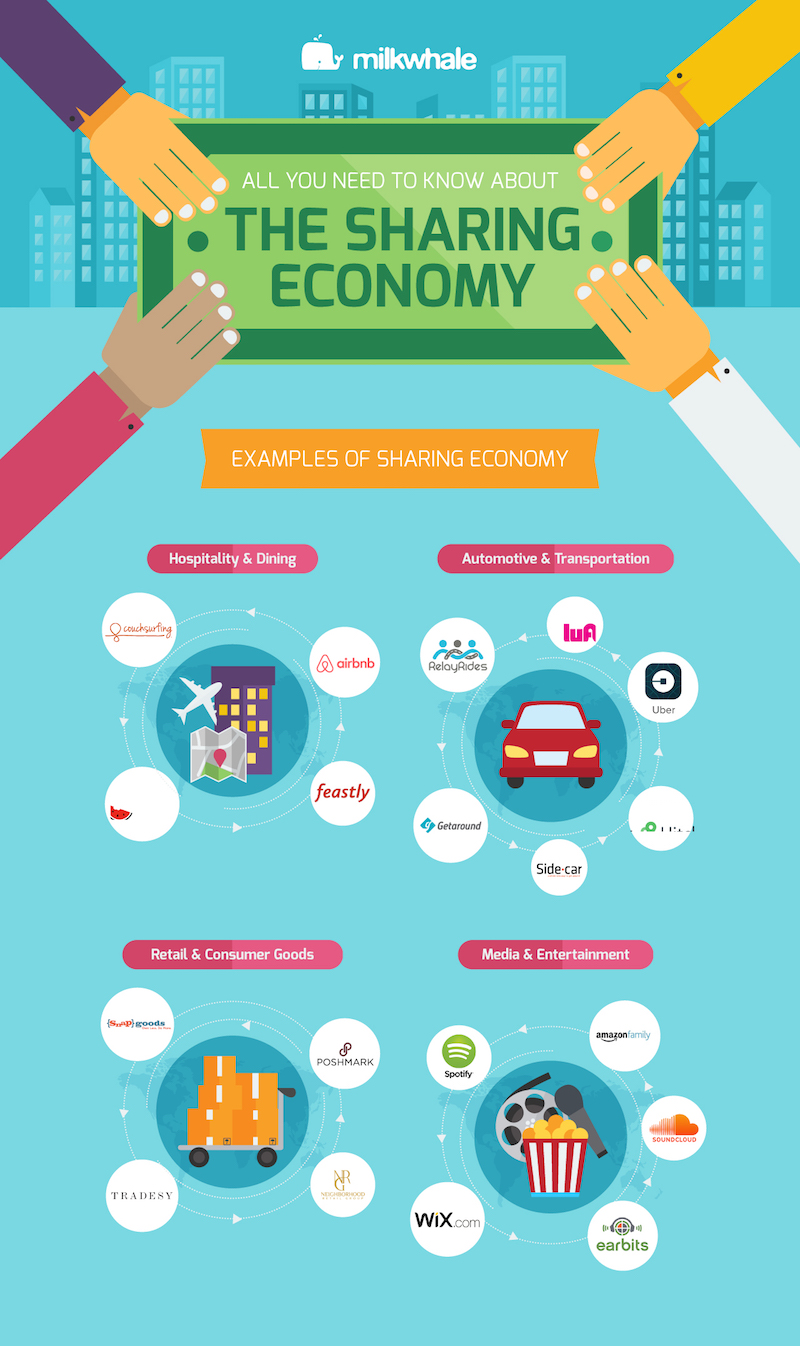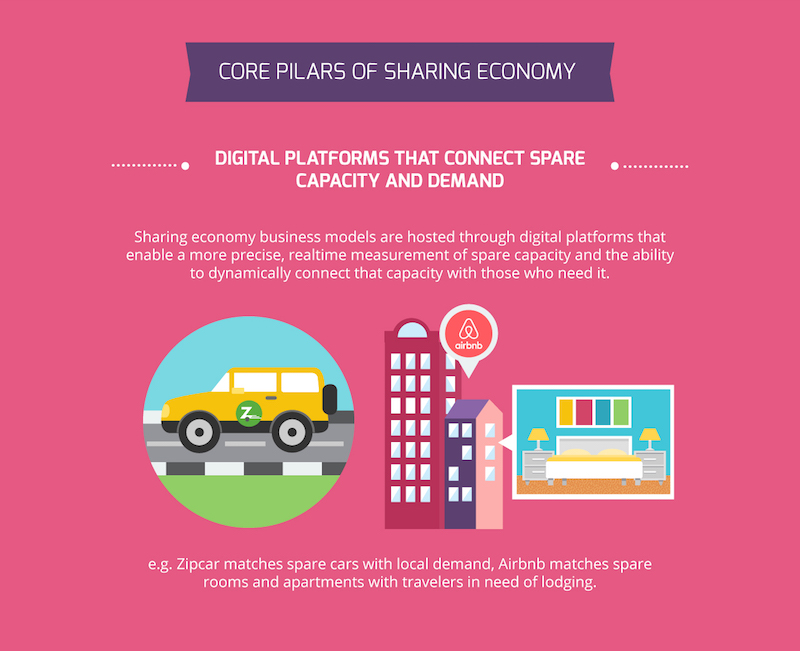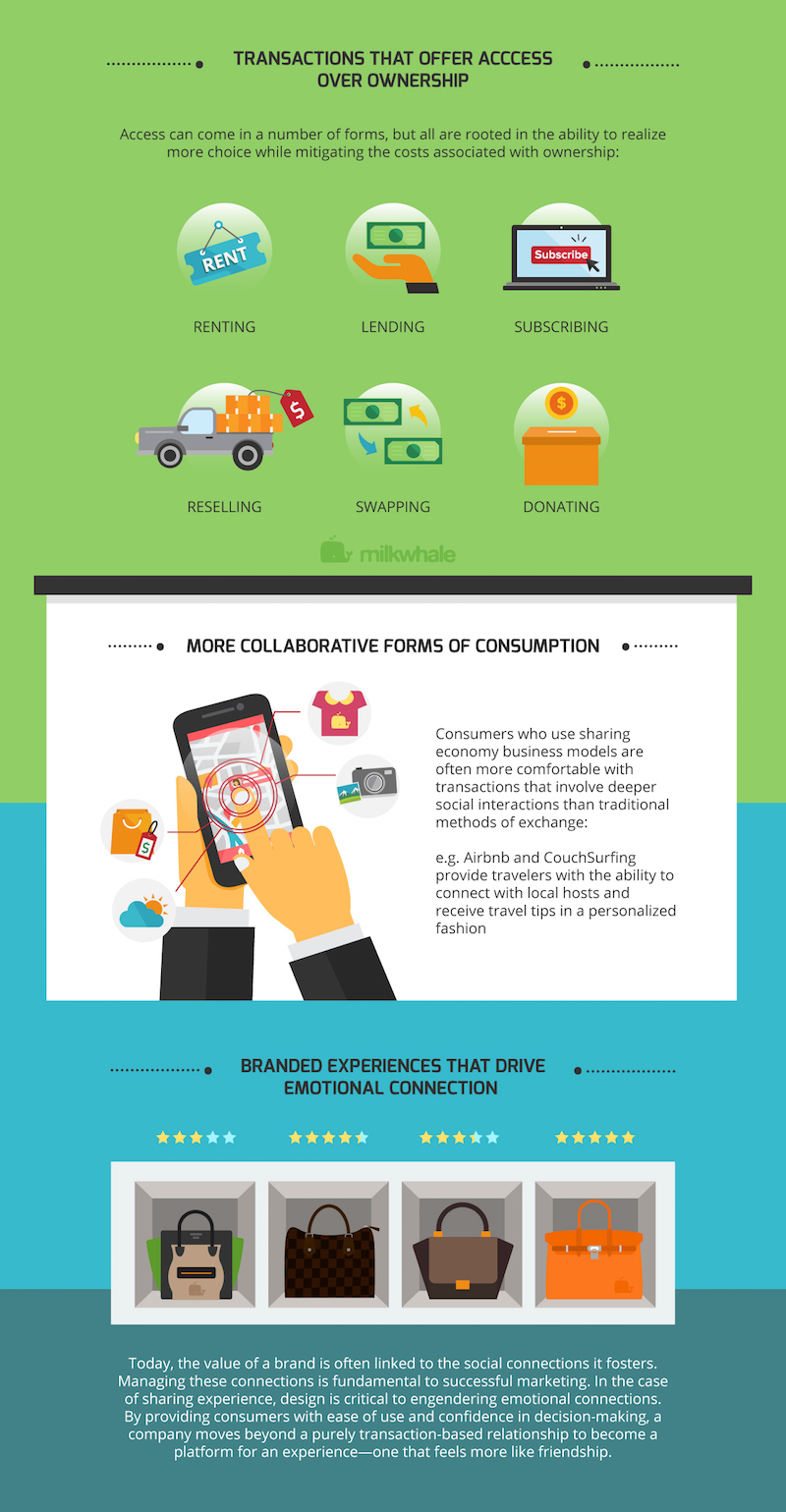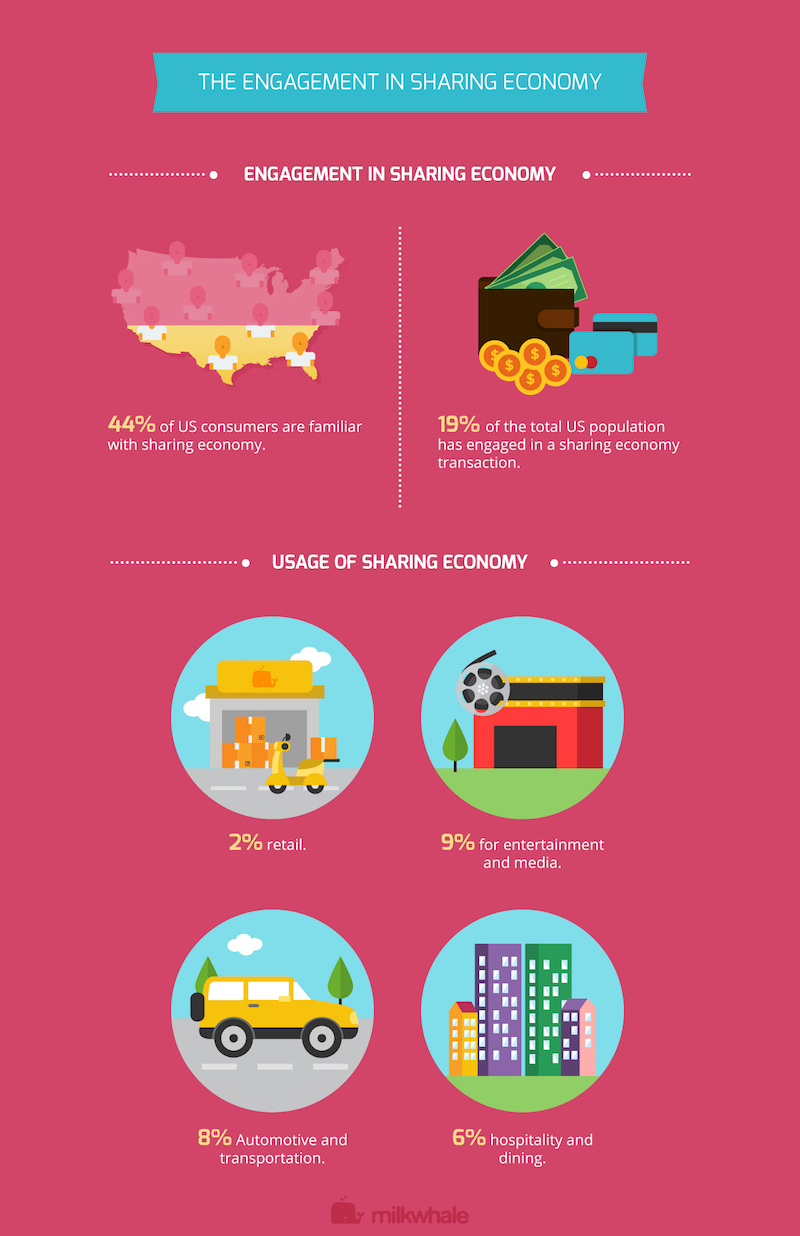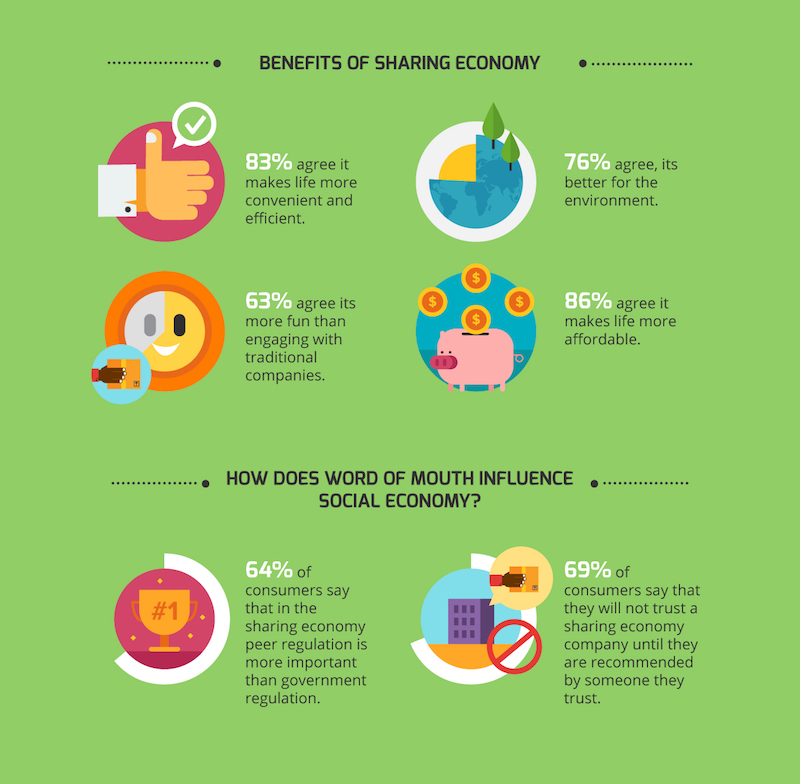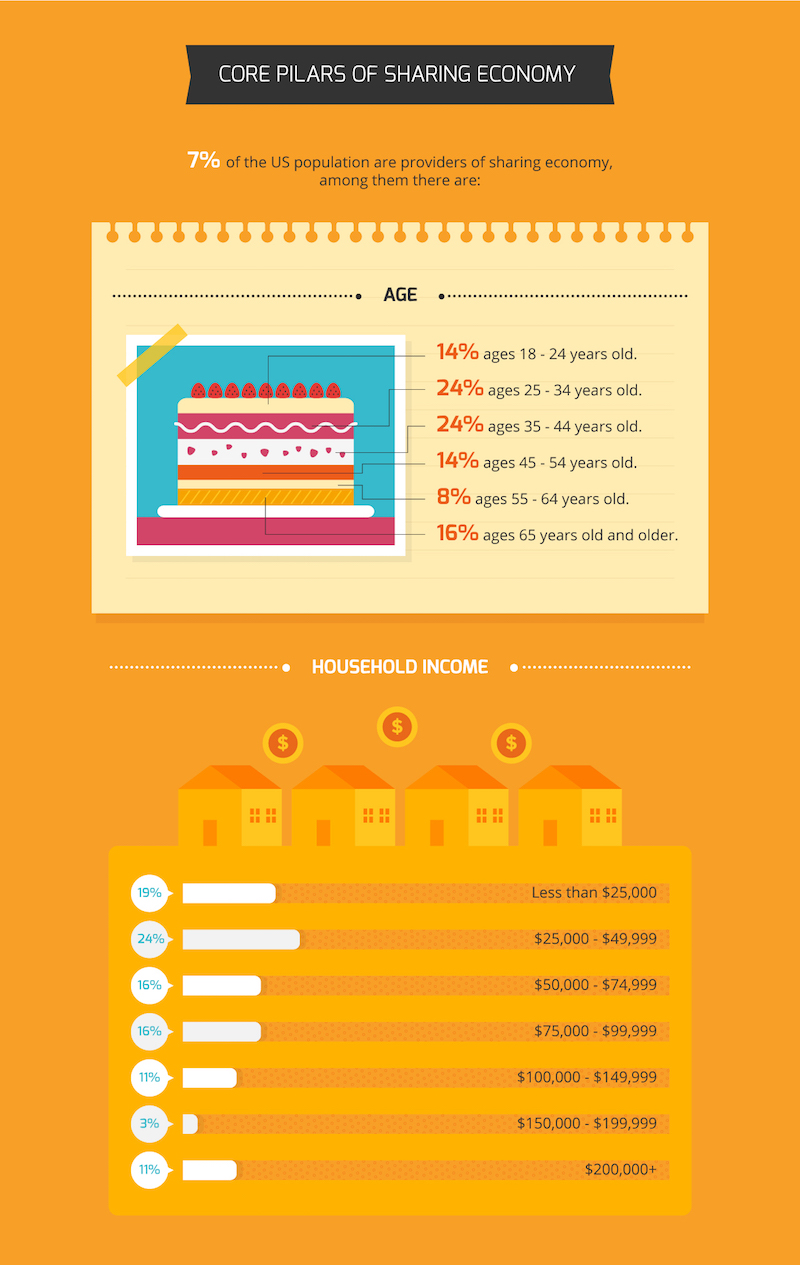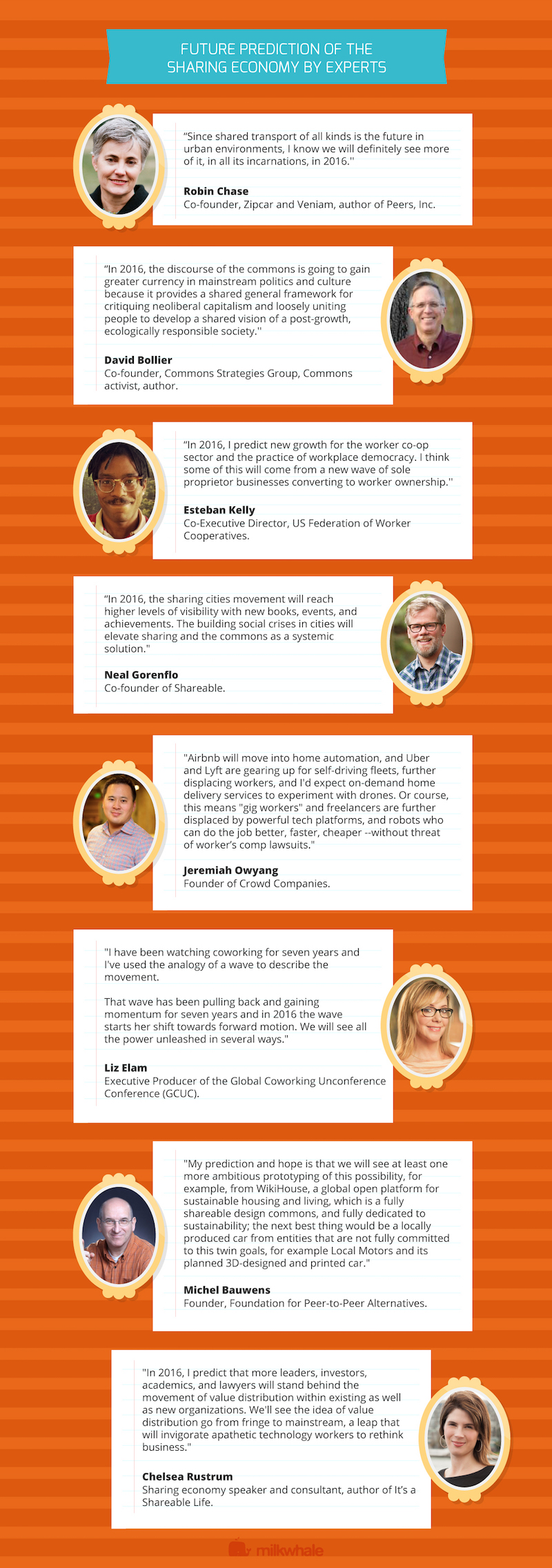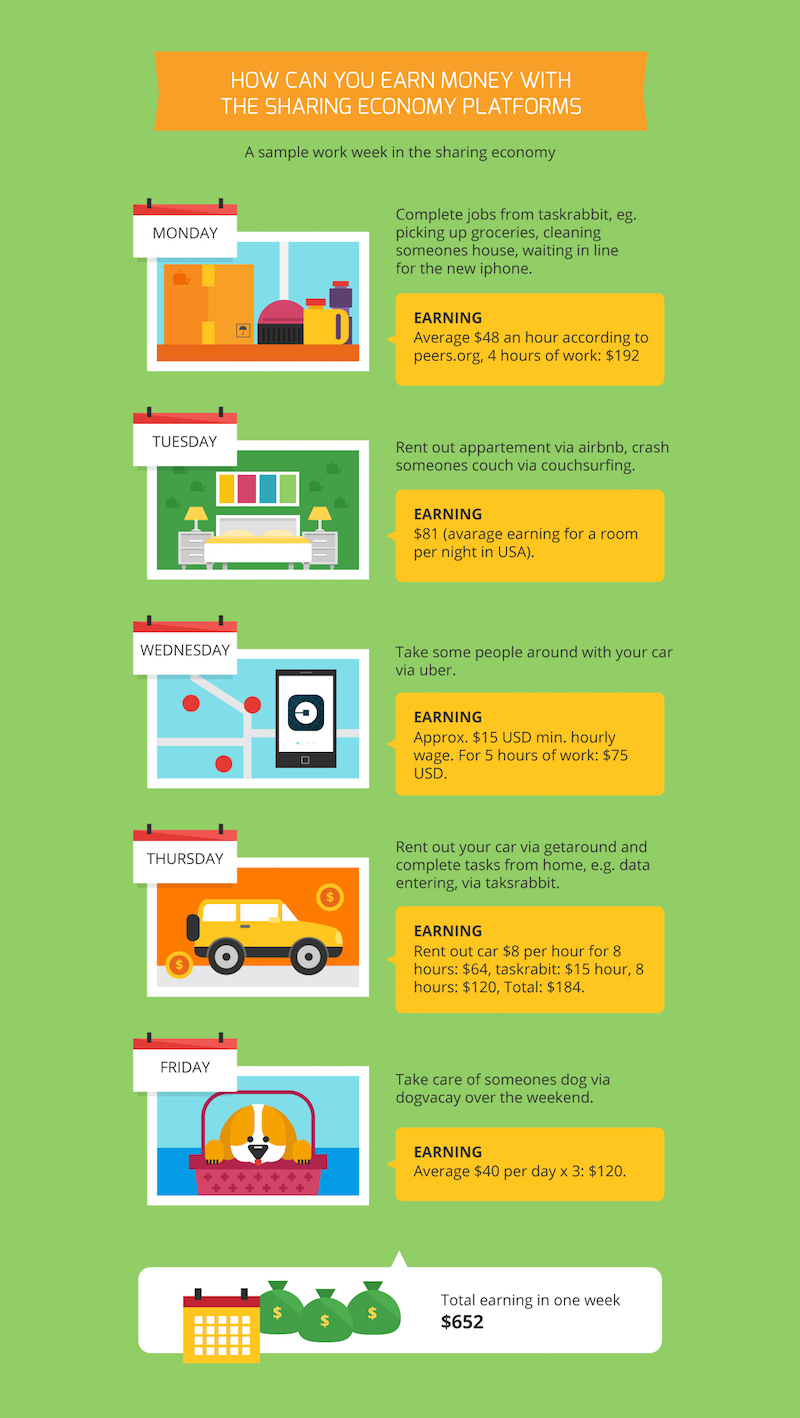Sharing Economy
The Art of Sharing Economy
Sharing economy is a system built around the connection between social relationship, economy needs, and intellectual or physical resources. It includes shared creation, production, and consumption of goods and services by different people and organizations.
Examples of Sharing Economy
AirBnb is one of the major company in the sharing economy world. AirBnb provides a digital platform for homeowners to share their spare rooms with travelers for a payment, thus the name ‘sharing’.
Other examples of companies with sharing economy ideology are Lyft, Uber, Soundcloud, Spotify, Feastly, Poshmark, Getaround, CouchSurfing.
Click To See Full Infographic!
Core Pillars of Sharing Economy
Digital Platforms as Bridges Between Supply and Demand
Sharing economy business models are hosted through digital tunnels that connect demand and spare capacity of supplies. Digitalized activity is preferred in sharing economy business models since it’s easier to keep track and provide accurate, real-time updates on demand and supply.
A simple example of this is Zipcar. Zipcar matches spare cars owned by individuals and local demand of rentable vehicle.
Transactions That Offer Access Over Ownership
Access to product and demand exchange in sharing economy come in a number of forms. However, these forms are all rooted from an economy intuitive that makes resource owners and users realize the choices available in mitigating costs associated with ownership: renting, lending, subscribing, reselling, swapping and donating.
More Social and Collaborative Forms of Consumption
Consumers who prefer using sharing economy business models are often more attracted to transactions that involve deeper social interactions than traditional exchange.
E.g. Airbnb and CouchSurfing provide travelers with the ability to connect with local hosts and receive travel tips in a personalized fashion.
Branded Experiences That Drive Emotional Connection
In the golden years of social media, a brand’s image and value are intertwined with their ability to build and maintain a positive social connection with their consumers and/or community. It is, like it or not, the core of a successful marketing.
For sharing economy business models an excellent design, ease of use, and responsive customer service are critical to engendering emotional connections between them and their consumers/community. When a company has achieved this, they move beyond a transaction-based relationship to an experience platform that feels more like friendship.
Click To See Full Infographic!
Pioneers of sharing economy
There are thousands, if not millions of sharing economy businesses and startups from all around the world, but these big names are the reason the terms ‘sharing economy’ was used in the first place. These companies have achieved what others might have thought improbable and inspired those other thousands, if not millions to follow their footsteps to success.
They are the companies that you may call the pioneers of sharing economy.
Click To See Full Infographic!
The Engagement and Usage of Sharing Economy
Engagement of Sharing Economy
There are 44% of US consumers who are familiar with sharing economy concept. It means that sharing economy has been gaining popularity since the term first emerged in 2008. On top of that, 19% of total US citizens (around 61 million people!) have engaged in a sharing economy transaction.
Usage of Sharing Economy
Usage-wise, sharing economy is most popular in media and entertainment industry (9%), followed closely by automotive and transportation industry (8%).
Hospitality and dining industry, seeing how popular AirBnb, CouchSurfing, Yelp and other similar services are, gets only a small 6% of sharing economy.
And despite the traditional concept of transactions in a retail industry, there is a 2% use of sharing economy in it.
Click To See Full Infographic!
Benefits of Sharing Economy
The sharing economy allows consumers to access goods — a car or a designer purse, for example—without bearing the costs of ownership. Even by this sentence alone, we can see that sharing economy provides great economic value to consumers and suppliers.
Sharing economy business models exist because of an excess of resource and unfulfilled needs. When a traveller in need of transportation during their vacation, business models like Uber and ZipCar can accommodate their needs without having them complete a set of ludicrous paperwork.
In short – convenience and efficiency with sharing economy model are very high. In fact, 83% of survey participant say so.
In addition to that, sharing economy business models like Uber and ZipCar help to reduce the number of distributed vehicles – and it’s a good thing for our environment.
Sharing economy business models are peer-to-peer interactions, and that means there is no formality needed to do transactions – it’s all about social interactions. Sharing economy business models are, in a way, a social venue that brings people together.
Ultimately, the main purpose of sharing economy concept is to help resource owners getting the most value out of their investment and to mitigate consumers’ unnecessary spendings by providing a shared consumption of said resource between the two parties.
Sharing economy makes life more affordable.
How Does Word of Mouth Influence Social Economy?
Word of mouth is the best channel a sharing economy business can use to grow. Sharing economy is, in fact, an economy concept that relies very heavily on the existence and behavior of their community.
In sharing economy business models, most consumers prefer that the main rule is peer regulation instead of government regulation.
And unlike other business models that put marketing as their main conversion optimization device, in a sharing economy business model word of mouth is most powerful factor that affects a company’s growth and popularity.
A friend’s recommendation, a suggestion by a family member, or a simple tip from a distant relative can make someone trust a sharing economy company fully.
What Do Consumers Think About Sharing Economy?
As delightful as it may be, sharing economy isn’t always an over the moon experience for its users. It has its own inconsistency in shaping the user experience.
Of course, there are many factors that determine the user experience – but we can’t seem to put our finger on each one of them. Sharing economy is sourced out of, and used by individuals. Individuals are different from one to each other.
For example, Anthony, an Uber driver is a tidy bachelor that cares so much about the cleanliness of his car. It indirectly bumps up the experience rating of anyone who fortunately gets a ride in Anthony’s car through Uber.
Dean, on the other hand, is a messy divorcee who has to make a living some way. He signed up to Uber only for the easy bucks he can made using his dusty car.
This is the simple example of experience inconsistency problem in a sharing economy business model. However, the data still shows positive overall testimony on sharing economy business models.
Who is Most Excited?
There is, of course, specific audience groups that prefer sharing economy business models to traditional exchange methods. Because sharing economy businesses are mostly using digital platforms, it requires a certain degree of tech savviness to get access to them.
In addition to that, household general income also factors into consumers’ final decision in whether they use sharing economy business models or not. Millionaires, in most cases, will have owned most of the resources available in sharing business models and therefore is less likely to use them.
Core Pillars of Sharing Economy
Sharing economy in the US is powered by 7% of the total population, breaks down into different groups of citizens based on age and household income.
Predictions for 2016 by Experts
The experts in sharing economy have diverse views on how sharing economy will go in 2016, but there’s an overarching message within all those different opinions:
It will remain in power and grow into different directions. There will be more companies that follow their footsteps.
Click To See Full Infographic!
Tips to Earn Using Sharing Economy Platforms
Sharing economy platforms are convenient ways to earn an extra income (if you have a full-time job). It’s even possible to make them your main source of income.
Our team have rounded up a few sharing economy platforms and listed a viable way by which you can distribute your time to get the most income out of them.
How Sharing Economy Helps to Save More and Waste Less Resource
We mentioned earlier how sharing economy business models make life more affordable. We picked three largest industries in sharing economy: food, transportation, clothing and made a list where sharing economy helps to save more and waste lesser resources.

